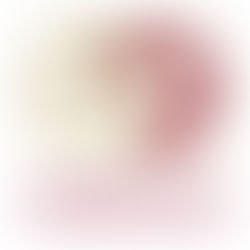Islamic Art at the Museum für Kunst & Gewerbe, Hamburg

I wasn't really aware that the MK&G had a complete Islamic art section but remembered that they had lots of ceramics on show. As a matter of fact, this is where I attended my very first pottery class at the age of about eleven or twelve. I did a pinch pot, a dove inspired by Picasso's ceramics and a standing Egyptian pharaoh figure. I was fantastic to have given the freedom to roam the museum unaccompanied except for the company of likeminded kids after closing time. I loved it!
Anyway, I left my own twelve year old to lounge on the sofas and explore the excellent Keith Haring poster exhibition while I went to explore some 'boring' (her words followed by "You cannot be serious!") pottery. What a pleasant surprise. The Islamic art section was excellent especially when it came to the way they displayed pottery.
The first room was entirely taken up by a display of pottery examples arranged to illustrate not only the different styles over the time of Islamic pottery found produced in different countries but also the influence porcelain from China had. Chinese pottery produced as early as the 8th century is thought to have influenced pottery production the Middle East. To imitate the white quality of Chinese porcelain the potters in there developed a white tin glaze during the 9th century. However, porcelain from China continued to pass through the Middle East region and thus continued to influence their pottery production.
The display starts with examples of pots from the 9th century Iraq and 10th century Iran illustrating the importance of script as decoration. At this stage the pots are all made from red earthenware clay and decorated with coloured engobes and slips under transparent glazes. I particularly like the way the lettering takes on a nearly abstract quality - at least for me who cannot read arabic. These pieces are decorated in Kufi style script or pseudo-script. Kufic script is an early stylised Arabic script used in writings in the Koran. It is very angular and has strong graphic qualities. For me the large white bowl on the left has definite aesthetic parallel qualities to some Native American pottery and decorations.
On the opposite side of this display case is a continuous display of pottery stretching from the 10th century to the early 18th century. I wish I had thought of taking a film of the display to show the continuity. This cobbled together slideshow will give you hopefully a good idea (even if the picture quality is a bit dodgy at times).
This was a brilliant start to the Islamic Arts display and I wish I'd had more time to spend. Here are a few more of the exhibits that caught my eye on the day: some of them because of their link to pottery and others because of their surface decorative qualities.
What becomes very clear is that due to the reluctance of using figurative imagery in Islamic art the use of patterns and their decorative qualities are universal to all items on display. Western art, which historically relied on painting and sculpture (until the advent of photography) valued naturalistic copying of nature and especially of the human figure. This approach resulted in a separation between the fine arts and crafts. This was not the case in Islamic art and there was no perceived divide between the decorative arts and 'fine art' where the intrinsic value would just be art for art sake. Many of the Islamic arts were closely linked to the celebration of Allah which is done by replicating verses from the Koran. Calligraphy was and is still today regarded as a high art form in Islamic art and can be seen incorporated into beautiful ways.


Here a verse from the Koran is part of the intricate metal work of the standard made in Iran during the Safvid dynasty, 1700/01. Not only is the object itself beautiful but it casts the most beautiful shadow. This is a bit like the fretwork patterns of the Window grills (Jalis) from India.

This same three-dimensionality is also carried over to the decorations on walls such as seen here with the tiles from a Mausoleum in Bukhara, Uzbekistan, c. 1359 where the ornamentation was carved into clay as a relief.

Tiles are found all across the Islamic world as it was an affordable way to not only decorate interiors and exterior of buildings but they were durable and helped to keep interiors cool. Aesthetically they offered huge scope for architectural pattern work. This is what appeals to me. So, here are some more of the excellent tiles that are on display at this museum in Hamburg:

Tile Panel from Kashan, Iran 13th-14th c., fritware with cobalt blue and lustre painting.


I was particularly taken by the colourful Iznik tiles that were on display from early blue and white examples to influences on Syrian tile making:
On the way out I came across this rather cabinet door, which came from the Kashmir, India, late 19th c. The rich pattern and the subtle colours along with reflective gold made me marvel at its beauty. I can understand some people's need for calm and simplicity but for me these objects give me a deep sense of wonder and appreciation of beauty and craftsmanship.





















































































